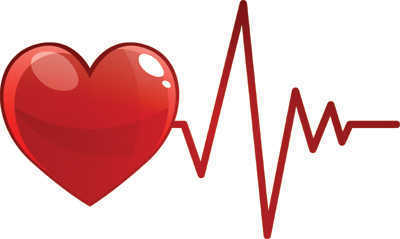WASHINGTON DC: According to a new research, a group of scientists have found an injectable gel that slowly releases short gene sequences known as microRNAs into the heart muscle.
In mammals, including humans, the cells that contract the heart muscle and enable it to beat do not regenerate after injury.
After a heart attack, there is a dramatic loss of these heart muscle cells and those that survive cannot effectively replicate.
With fewer of these contractile cells, known as cardiomyocytes, the heart pumps less blood with each beat, leading to the increased mortality associated with heart disease.
The researchers used mouse models to demonstrate a new approach to restart replication in existing cardiomyocytes.
Though the reasons cardiomyocytes don’t regenerate aren’t fully understood, the researchers used microRNAs that target signaling pathways related to cell proliferation, and were able to inhibit some of the inherent “stop” signals that keep cardiomyocytes from replicating.
With more heart cells dividing and reproducing, mice treated with this gel after heart attack showed improved recovery in key clinically relevant categories.
Talking about the study, Morrisey said, “Biologic drugs turn over very fast. The microRNAs that we used last less than eight hours in the bloodstream, so having a high local concentration has strong advantages.” Their short lifespan means that if patients were treated systemically, they would need to be injected frequently with large doses to ensure that a sufficient amount of microRNAs reaches their target in the heart.
And because these microRNAs are designed to promote cell proliferation, there would be a risk of tumor-producing, off-target effects.
The Morissey lab studies signaling pathways involved in heart and lung development and regeneration, while the Burdick lab has experience in designing biocompatible materials for drug delivery.
Burdick noted, “We want to design the right material for a specific drug and application. The most important traits of this gel are that it’s shear-thinning and self-healing. Shear-thinning means it has bonds that can be broken under mechanical stress, making it more fluid and allowing it to flow through a syringe or catheter. Self-healing means that when that stress is removed, the gel’s bonds re-form, allowing it to stay in place within the heart muscle.” While encapsulated, the microRNAs are also protected from degradation, maximizing the time period that they can be effective without the risk of them invading off-target cells.
To test their gel, the researchers used three types of mouse models.
The first group was normal, healthy mice. Within a few days after injecting the gel, their heart tissue showed increased biomarkers of cardiomyocyte proliferation.
The second group was “Confetti mice,” so called because they are genetically engineered such that they have individual cardiomyocytes that randomly express one of four different fluorescent proteins.
These fluorescent labels allowed the researchers to see that individual cardiomyocytes were indeed dividing in response to the microRNA- gel treatment.
After inducing heart attacks in the mice and introducing the microRNA-gel, the researchers could see that single red, yellow or green cardiomyocytes had become clusters, ranging from two to eight cells of the same color.
The third group was mice in which heart attacks were also induced so that clinically relevant outcomes of the treatment could be studied. These mice showed improved recovery as compared to controls, including higher ejection fraction — more blood pumped with each beat — and smaller increases in heart size.
With promising results in mice, next steps for the researchers will involve testing human heart cells in vitro and conducting physiological experiments in animals with more human-like hearts, such as pigs.
Burdick concluded by saying, “We’re seeing a change in approaches for regenerative medicine, using alternatives to stem cell delivery. Here, instead of introducing new cells that can have their own delivery challenges, we’re simply turning on repair mechanisms in cells that survive injury in the heart and other tissues.” The study was published in journal Nature Biomedical Engineering.
Breaking News
 Driving Naari Programme launched in Chandigarh
Driving Naari Programme launched in Chandigarh Punjab farmers reaping benefits of Mann Government’s crop diversification initiatives
Punjab farmers reaping benefits of Mann Government’s crop diversification initiatives Punjab and Kerala Join Hands to Address NRI Concerns
Punjab and Kerala Join Hands to Address NRI Concerns Macron refuses French Prime Minister’s resignation after chaotic election results
Macron refuses French Prime Minister’s resignation after chaotic election results Modi lands in Russia for first visit since Ukraine offensive
Modi lands in Russia for first visit since Ukraine offensive Saudi Arabia approves granting citizenship to global experts under Vision 2030
Saudi Arabia approves granting citizenship to global experts under Vision 2030 Vigilance arrests Panchayat Secretary, former Sarpanch for embezzlement in Panchayat funds
Vigilance arrests Panchayat Secretary, former Sarpanch for embezzlement in Panchayat funds Housing crisis in Canada forcing residents to move out of pricier cities: Poll
Housing crisis in Canada forcing residents to move out of pricier cities: Poll Historic Milestone: Canada Appoints Its First Female Chief of Defense
Historic Milestone: Canada Appoints Its First Female Chief of Defense Victory parade of T20 World Cup-winning Indian cricket team concludes in Mumbai
Victory parade of T20 World Cup-winning Indian cricket team concludes in Mumbai Maximizing impact of Aadhar in Punjab
Maximizing impact of Aadhar in Punjab Amritpal Singh to take oath as Khadoor Sahib MP on July 5
Amritpal Singh to take oath as Khadoor Sahib MP on July 5




































